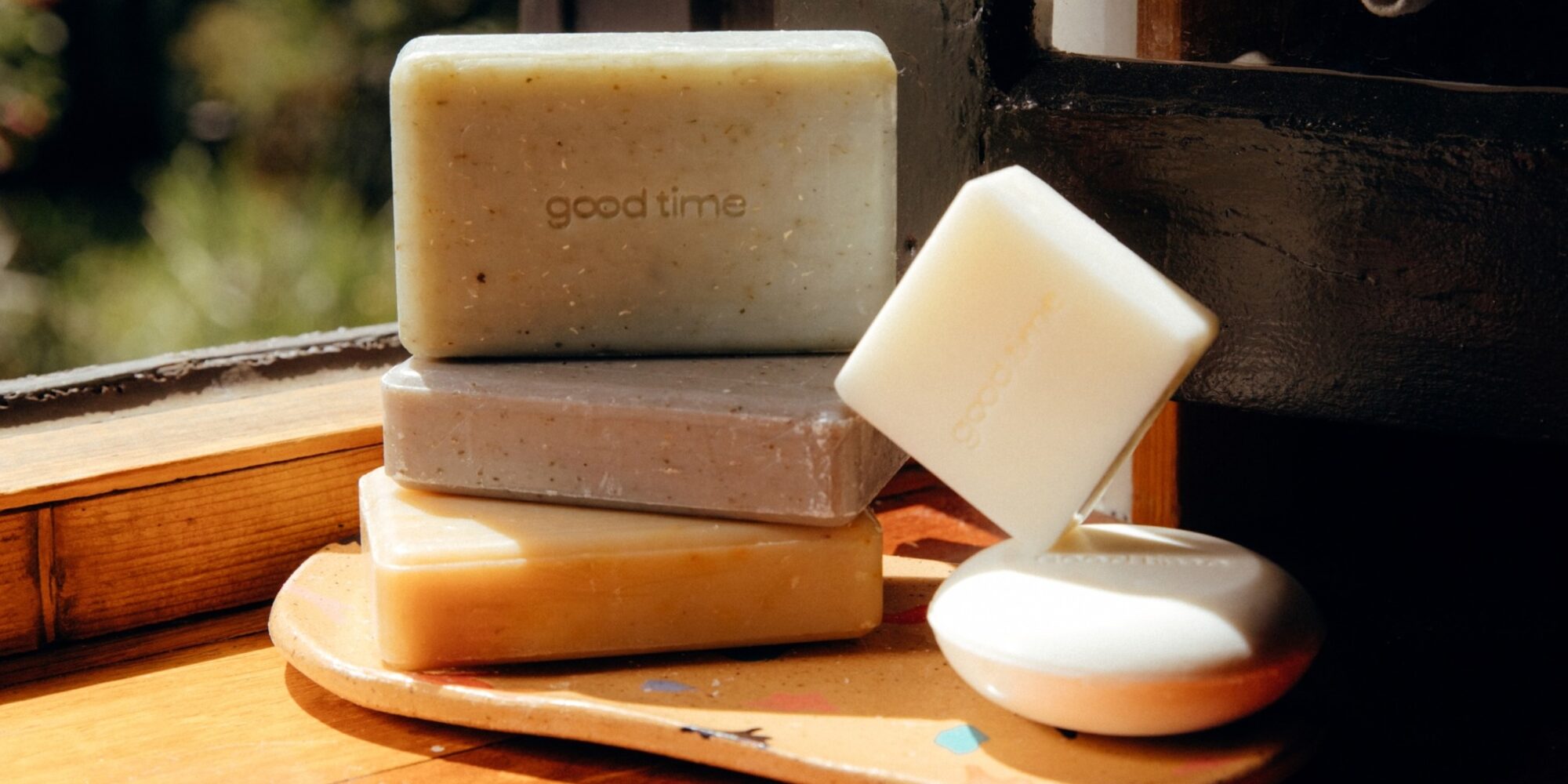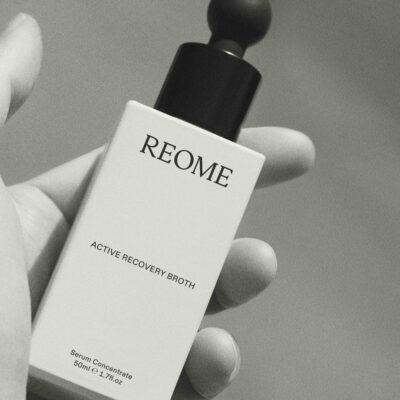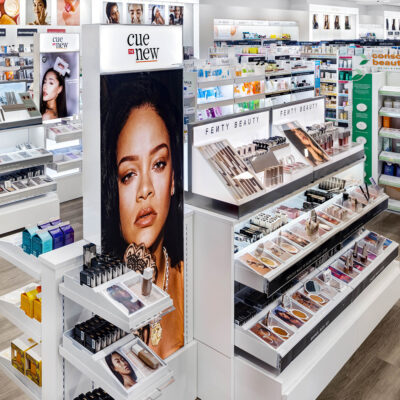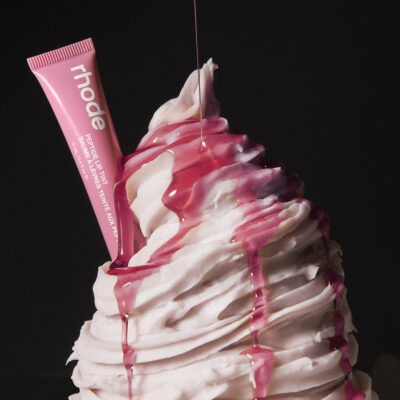
Has Sustainability Become Table Stakes For Beauty Brands?
Ten to 15 years ago, a new wave of brands such as Josh Rosebrook, Indie Lee, Odacité, Tara Harper, RMS Beauty and W3ll People put clean beauty on the map in the beauty industry. Rightly or wrongly, most beauty brands today have taken up clean beauty tenants. Even Cover Girl is touting its Cleantopia Mascara as being vegan and containing 72% naturally derived ingredients. The mainstreaming of clean beauty has made it less of a differentiator for clean beauty originators and lowered the volume on their calls for change in the industry.
Sustainable beauty seems to be following clean beauty’s trajectory, although exactly where the beauty industry is on the sustainability trajectory is unclear. Sustainable beauty brands pioneering a more sustainable approach to beauty such as Ethique, Susteau, HiBar, Common Heir and UpCircle have been on the market for several years, and many sustainability initiatives have spread broadly in the beauty industry (plastic-free packaging, compostability, refills and water usage reduction, for example). But just how mainstream is sustainability in beauty? If it is mainstream, what’s the impact of it being mainstream?
Those are the sorts of questions we’re thinking about here at Beauty Independent this Earth Month. For the latest edition of our ongoing series posing questions relevant to indie beauty, we decided to get beauty entrepreneurs, investors, executives, consultants, manufacturers and others to weigh in on them. We asked 22 of them the following questions: Do you believe sustainability, similar to clean beauty, has now become table stakes for beauty brands? What does that mean for brands and say about consumer demand for sustainability?
- Rachel Roberts Mattox Brand Developer and Strategist
I do believe that messaging around sustainability is table stakes for beauty brands. Unfortunately, the term “sustainable” is being used loosely and broadly, without quantified, verified action to back it up.
I understand that achieving end-to-end sustainability is very difficult. It requires an interdependent strategy that considers environmental, social and human health at every stage in the supply chain, with an aim to have a net neutral or net positive impact. This is rarely, if ever, achieved.
So, most brands highlight a few sustainable features, overlooking broader supply chain issues where significant damage, pollution and waste occur. For example, a brand may claim to use sustainably sourced ingredients and sustainable packaging without doing any due diligence on their suppliers.
But ingredient and raw material supply chains are notoriously opaque. Unless the brand team makes regular site visits and works with reputable third-party certifying agencies, they really don’t have full visibility and transparency.
So, they are unknowingly greenwashing. This diminishes consumer confidence (64% of global consumers worry that brands only engage in sustainability for profit) and does nothing to help solve our climate crisis.
We need to course-correct. Unlike the term “clean,” which has no single universally accepted definition, sustainability can be defined and measured. We have the suppliers, tools and technology to make sustainable products and to lead sustainable companies.Where all industries struggle is in creating financial models that support long-term sustainability. Quality materials, ethical working conditions and renewable energy cost more.
Minimum order quantities on sustainably sourced ingredients are high. R&D in biotech is expensive. We need to normalize steady, sustainable growth, slower trend cycles and longer timelines for returns. Then, we need to communicate to our customers with honesty, accuracy and optimism.
Greenwashing and greenhushing are just two sides of the same coin. They are strategies that lack integrity and undermine the customer’s intelligence. Transparency and open dialogue are the key to building brand loyalty.
- Gavin Meschnig Partner, Consumer Good and Retail Practice, Kearney
The good-for-me, good-for-the environment movement is now an integral part of how beauty and personal care companies (BPCs) now think about their brands and proposition towards the consumer. For all leading BPCs since 2020, between 20% to 45% of launches, including product refreshes, have had a sustainability claim. So, clearly brands are thinking and talking about sustainability.
However, few brands are truly credible on the topic or are executing well against their own sustainability ambitions. For example, while many brands have invested in making their packaging more sustainable, few have really transitioned to more sustainable formulations, operations (e.g., scope 1 to 3 emissions) or circular business models.
Consumers are getting more and more demanding when it comes to sustainability. They are also becoming more knowledgeable when it comes to assessing brands that are truly driving sustainability versus greenwashing.
Brands need to A). truly include sustainability into their purpose, B). involve consumers and other stakeholders (e.g., NGOs) in their sustainability efforts, and C). put resources behind their sustainability agenda to amplify and accelerate company-wide sustainability initiatives.
- Amanda McIntosh Founder, Take My Face Off
Some consumers will never care, and some will care strongly. Most are in the middle. That majority in the middle doesn’t know that the topic is incredibly complicated. They don’t usually take the time to learn about what’s really sustainable and what just seems sustainable.
I don’t think that sustainability alone is enough to get the middle of the market to buy a product. If two products are otherwise equal, but one makes a claim that it’s more sustainable, that might be the deciding factor to prompt a sale.
I think the most successful use for sustainability from a marketing and PR standpoint is for a brand to change their packaging or sourcing to make it more sustainable and to do a good job of talking about this to their customers. It can increase customer engagement and loyalty.
Sustainability isn’t usually a deciding factor, but if the person has decided to buy for other reasons, it improves post-purchase satisfaction levels and repurchase intent. I wish I could say that a product has to be sustainable these days to succeed, and that the consumer can see through misleading claims, but I don’t think we’re there yet.
- Cristina Nuñez Co-Founder and Partner, True Beauty Ventures
Like clean beauty, the growing demand for sustainable products reflects a broader movement in consumer preferences towards ethical consumption. There is no doubt that beauty is a hyperconsumerized category and a significant contributor to waste generation, producing over 120 billion pieces of packaging globally each year that ends up in landfills and contributes to environmental pollution.
Efforts to reduce waste have gained momentum in recent years, with many beauty brands implementing sustainable packaging initiatives, offering product refill options and promoting recycling programs. However, sustainability is far from table stakes, and there is still so much work to be done to address the full environmental impact of the beauty industry.
One key reason we haven’t arrived at table stakes status is that current technology and manufacturing practices, while improving, are still not there to produce fully sustainable products that also meet consumer needs and expectations. From sourcing practices and packaging itself to product disposal and recyclability, it is incredibly challenging to have fully end-to-end sustainable product.
That hasn’t stopped many brands from trying to do what they can to reduce waste and market their mission and values around sustainability. In fact, we have seen an explosion of brands jump on this trend as we saw with clean beauty and are also seeing a considerable amount of greenwashing in order to appeal to consumers ethical nature.
However, like clean, sustainability is a product or packaging attribute. For us, this is never the sole reason to invest in a brand nor is it the sole reason a consumer buys a product. While consumers do expect brands to be focused on attributes like clean, safety and sustainability, these characteristics have not overtaken the impact of efficacy, experience and even virality as drivers of purchasing decisions.
Yet we do expect to see sustainability become a more common thread in our industry, heightened further by retailers increasingly requiring these stamps of approval prior to launching brands. While sustainability is important for a brand to keep in mind as they innovate for the future, we would not advocate sacrificing on product efficacy, experience and price as these continue to have a bigger impact currently on consumer purchasing.
- Maggie Spicer Principal and Attorney, Source Beauty ESG
Any brand launching today or looking to get on major retail shelves needs to incorporate sustainability in a very real way. This isn't just in response to consumer trends.
Retailers are setting higher standards for things like recyclable packaging and new regulations are emerging across the globe establishing sustainability standards in consumer goods. The good news is this is a huge opportunity for brands that tackle the challenge of sustainability head-on.
We're seeing a more nuanced sustainability conversation that goes beyond packaging. This gives brands the chance to set themselves apart in a crowded market with initiatives like responsible sourcing, data-backed impact assessments and circular design.
- Elizabeth Lim Strategic Advisor, Joyance Partners
Sustainability, much like clean beauty, has become table stakes for beauty brands and reflects an important shift in consumer demand and expectations. Consumers are increasingly cognizant of the environmental and social impact of their purchasing decisions and intentionally looking for brands that align with their values.
Social media has also led to greater scrutiny of brands’ environmental and ethical practices, requiring the need for transparency and accountability to maintain consumer trust and loyalty. This entails not only proactively addressing environmental challenges, but also tackling social and economic issues that affect both the planet and their everyday existence.
Brands that don’t make sustainability a major priority may lose market share and become less relevant in an increasingly conscientious consumer landscape.
- MELISSA HIBBERT President, BrainTrust Founders Studio
Sustainability has become an essential consideration for brands, driven by a growing cohort of eco-conscious consumers who prioritize products derived from plants and companies committed to reducing their environmental footprint through sustainable packaging and ingredients.
Brands that embrace sustainability wholeheartedly, showcasing their ethos transparently in both packaging and marketing communications, tend to enjoy greater favorability among consumers.
However, for beauty brands, the increasing demand for sustainable practices inevitably attracts regulatory attention. Many retailers are now favoring brands that offer recyclable and refillable packaging, reflecting the evolving preferences of consumers.
Consequently, brands aspiring to secure shelf space must not only align with consumer expectations, but also meet the sustainability requirements set forth by retailers. This creates significant pressure for brands to adapt and innovate in order to remain competitive in a market increasingly shaped by sustainability considerations.
- Kate Duffy VP of Research & Development, Elevation Labs
Like “clean” or “natural” beauty products, “sustainable” in the context of consumer products doesn't have a clear definition. But unlike when “clean” beauty took off, consumers are well aware of greenwashing.
The industry is in the midst of trying to understand how to provide better options for what seems to be inevitable consumption. No CPG product is ever going to be truly sustainable, but I think consumers are starting to gravitate toward brands that are honest about that and are putting in the work to understand where their biggest impact lies and how to minimize it.
First, it was refillable packaging, then water-free or concentrate products, and now we're seeing more and more brands investing in partnerships with companies like Bluebird to conduct life cycle assessments on their products and Pact Collective to increase the recyclability of their consumed products, and consumers are paying attention.
I don't think we're yet at a point where sustainability is a key driver of conversion for consumers, but I think we will get there sooner rather than later, and brands that aren't investing in more sustainable practices will be left behind.
- NORA SCHAPER Co-Founder and President, HiBar
Given that plastic packaging is still rampantly used throughout the beauty industry, unfortunately, I don’t think we can yet declare sustainability to be table stakes. The good news is that the trend is moving in the right direction.
However, as brands introduce more sustainable products, it’s important for these products to perform as well or better than traditionally plastic-packaged products, and if it’s a familiar experience like a pushup applicator for deodorant, all the better.
Customers should not be forced to choose between looking good and feeling good about their impact on the planet.
- Kate Assaraf Founder and CEO, Dip
Let's face it, the quickest and cheapest way to launch something new is often by using plastic or PCR. That's just the way things are often done in beauty, and I don't see it changing much.
Especially when economic times are tough, people tend to care more about saving money than sustainability. If consumers can get the benefits they want and need from a plastic or non-sustainable product, they're probably going to go for it.
So, as long as these factors hold true, I don't see brands rushing to prioritize sustainability in their development plans. Now, don't get me wrong, sustainability is a big deal for my brand and our customers, but I don't expect everyone else to jump on board.
Realistically, truly sustainable customers want to buy less, which isn't exactly a motivating factor for most entrepreneurs when it comes to developing new products.
- Thomas Winarick Indie Beauty Brand Advisor
This is personally important to me, and I strongly believe that sustainability is a duty of our industry both for brands and retailers.
Sustainability is a choice, and it is my hope that all brands and retailers will do their part to utilize the very readily available materials that now exist for product, packaging, fixtures, etc., to have positive impact on the environment. As well, we need to call on our third-party manufacturers, fillers and warehouse partners to practice sustainability.
With or without the consumer demand, we should be mindful of our ability to make an impact and be a voice.
- ANDREW GLASS Founder and Co-Founder, Non Gender Specific and Wakse
I personally think that the importance of sustainability has taken a bit of a backseat for consumers as ingredient transparency has become so important.
I've heard from many consumers that sustainable materials are great, but they question whether the manufacturing methods to create those materials are also good for the environment, or are they just as bad?
Sustainability from end to end still has a long way to go before it will be fully accepted by the consumer.
- KAYLEE ASTLE Founder and CEO, Blanka
Sustainability has become non-negotiable for beauty brands. In addition to sustainable practices, other table stakes in the beauty industry include delivering high-quality products and ensuring efficient shipping to get products into the hands of consumers as quickly as possible.
However, merely meeting these standards is no longer sufficient for brand success. To truly resonate with consumers, brands must carve out a distinct niche and articulate a compelling narrative that aligns with evolving values and aspirations.
- RICHIE RUBIN EVP, Garcoa
As human beings, it is important that we are mindful of our environmental footprint. We should work hard to ensure that we leave the world in the way we found it (or better).
Throughout the last few years, consumers have been subjected to a significant amount of greenwashing that has undermined trust and created confusion. We are dealing with retailers and states that have varying regulations.
There is a huge opportunity for a governmental organization or a coalition of brands and retailers to step into this space and set the standard for all industries. This will make it easier for brands and consumers alike to establish a baseline definition for "sustainability."
In the absence of these singular, unified messages, it is important for brands to understand their environmental impact on the world. They can start by looking at all of their primary and secondary packaging. These brands should see if there is an ability to utilize components that are made from renewable resources.
If something cannot be made from a renewable resource, they should share the background so consumers can become more knowledgeable about what they are consuming. It is important for all brands to take this approach as sustainability is becoming a critical aspect of every brand's story.
- CARLOS TIMIRAOS Founder and CEO, Lab and Bench
Sustainability has become critical to a brand’s ethos. Consumers expect to align themselves with a brand’s values and culture that prioritize concern not only for their personal health, but the well-being of the planet.
An increased awareness of what they purchase and the effect these products (and services) have in their personal lives and their environment has expanded the definition of sustainability beyond recyclable, reusable, biodegradable/compostable packaging to include ethical sourcing (the preservation of natural resources, reusing raw materials and non-polluting methods of production), and concern for social issues (supporting local communities, working conditions and treatment of workers).
Across industries, consumers want to make purchase that tell the world, “I use this, I care.”
- Hannah Kamran GM, Good Time
In order to meet consumer expectations and demands, sustainability has become table stakes for beauty brands these days, but only on a surface level and often times as a lever to pull for marketing purposes and to enhance brand perception.
By the sustainability standards that Good Time upholds, all aspects of beauty products including ingredients, packaging, supply chain and delivery should be taken into account when evaluating the environmental toll a brand is taking on our Mother Earth.
Most brands aren't taking into account their footprint and where they can improve. And if they are evaluating and making improvements, it often seems to be along only one dimension.
- CHRIS HOBSON President and CEO, Rare Beauty Brands
Sustainability is table stakes in the sense that brands need to be working on it, but, unlike clean beauty, which is the de facto standard in terms of ingredients and formulations for everyone now, most brands and the industry as a whole are still at the early stages of the journey.
The fact is that packaging still has a long way to go in terms of recyclability and affordability, especially considering the fact that while consumers say they want it, so far only a small sub-segment has been willing to pay more for it.
- David Gobeli GM, Natural Contract Manufacturing
Sustainability is absolutely a top-of-mind concern for consumers. Brands can no longer afford to treat it as an afterthought. This means embracing eco-friendly packaging, responsible sourcing, and ethical production practices.
Consumer demand for sustainability indicates greater awareness of environmental impact and a desire for conscientious consumption. Brands that actively demonstrate this commitment will build trust and loyalty.
- SONIA SUMMERS Founder and CEO, Beauty Barrage and The Beauty Strategy Group
I do believe that sustainability has become table stakes for beauty brands particularly because of the consumer demand and awareness. Unfortunately, this means that your cost of goods will become higher since most of the sustainable packaging is more costly.
Brands will need to be mindful that the consumer is becoming more and more educated every day about landfills and the impact to our environment. Consumers want to do better and shop sustainable brand.
Retailers like Sephora and Ulta are becoming more and more involved by highlighting those sustainable brands and by partnering with organizations like Pact Collective that collect empties in store.
- SARAH WOELFEL Co-Founder and Partner, Cult Capital
Sustainability has now become table stakes for consumer brands. This trend has been prevalent in the food and beverage category with companies like ZenWTR leading the charge. We are starting to see the trend become more prevalent in the beauty space.
Cult recently invested in Subtl Beauty, a stackable, portable and customizable makeup solution that offers refillable pods to eliminate waste. In haircare, our partner brand, Act+Acre offers refillable solutions for their shampoo, conditioner and plant-based hair capsules.
While sustainability in and of itself is not a differentiator, it is becoming table stakes as we think about the next generation of iconic beauty brands.
- SARAH BROYD Partner, Beauty and Personal Care Industry Lead, Clarkston Consulting
Clarkston has been watching sustainability as an emerging trend for years. Younger generations (gen Z) have been the driving force behind making this a must have for brands.
Gen Z advocates for sustainability, and the growing influencer culture on social media has helped spread the demand, too. As gen Z’s purchasing power becomes stronger, brands will get left behind if their sustainability and ESG are not at the forefront of what they do. The broader CPG industry has seen an increase in the importance of sustainability, but the beauty industry must follow suit.
I shared my perspective on this in a piece I wrote in 2022, "Making the Transition to a More Sustainable Beauty Industry,” and I think it still resonates today: “As companies transition into more sustainable beauty practices, they’ll need to be strategic in their approach to ensure long-term success and profitability. Only now, there is not just an intrinsic motivation to help the environment, but there are profitable opportunities in sustainability.
Time and money will need to be invested to implement new systems and discover innovative solutions. Despite the cost of upfront investment, not engaging in sustainable practices could be more expensive in the long term. As companies experiment with moving into sustainability, they need to assess their strengths and weaknesses within manufacturing and distribution process.”
- Elina Wang Founder and CEO, ESW Beauty
Sustainability has indeed become a crucial factor for beauty brands, much like clean beauty standards. This shift is largely driven by evolving consumer preferences and a growing awareness of environmental and social issues.
Consumers today are more conscious about the products they use and their impact on the planet and society. Brands that prioritize sustainability demonstrate their accountability and responsibility towards the environment and society, which resonates positively with consumers.
The increasing demand for sustainability in beauty products signifies a significant shift in consumer values. It shows that consumers are not only focused on product efficacy, but also on the ethical and environmental aspects of the brands they support.
If you have a question you’d like Beauty Independent to ask beauty investors, entrepreneurs, executives, manufacturers and consultants, please send it to editor@beautyindependent.com.




